

Centre Market
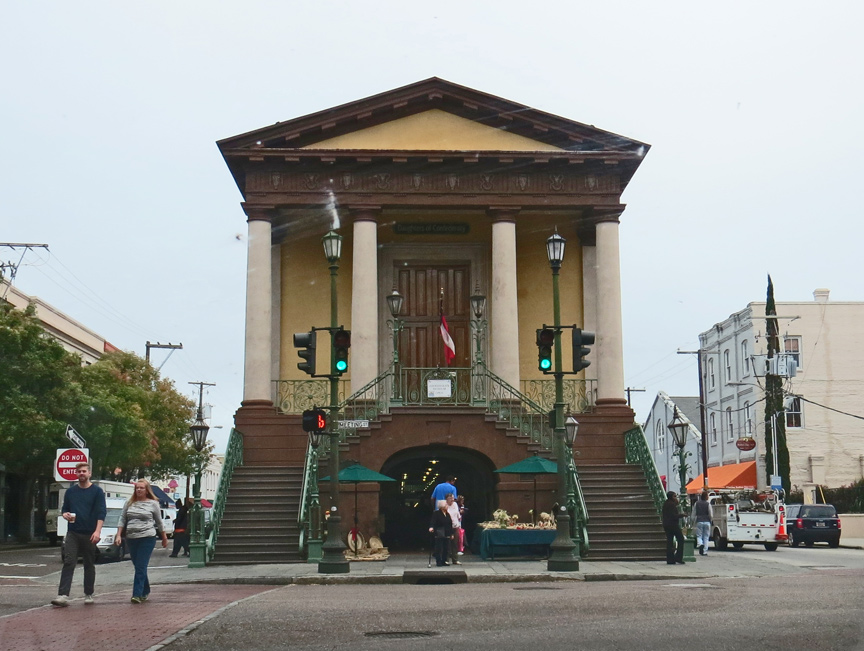
The Market Hall
The City Market, or Centre Market, is a historic market complex in downtown Charleston, South Carolina. Established in the 1790s, the market stretches for four city blocks from the architecturally-significant Market Hall, which faces Meeting Street, through a continuous series of one-story market sheds, the last of which terminates at East Bay Street. The Market Hall has been described as a building of the "highest architectural design quality." The entire complex was listed on the National Register of Historic Places as Market Hall and Sheds and was further designated a National Historic Landmark.
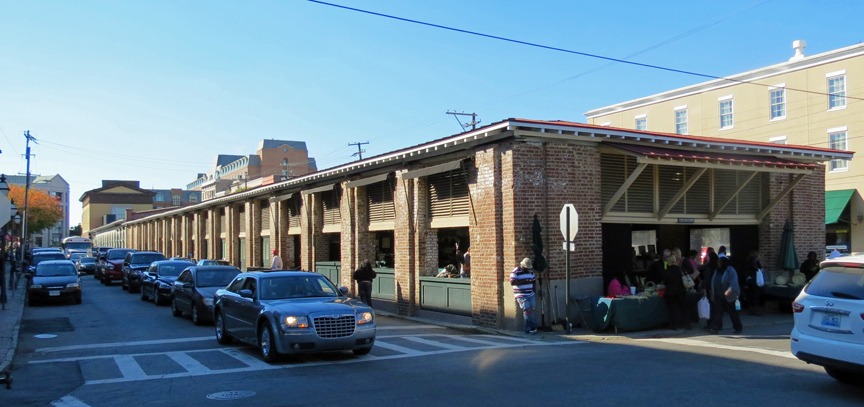
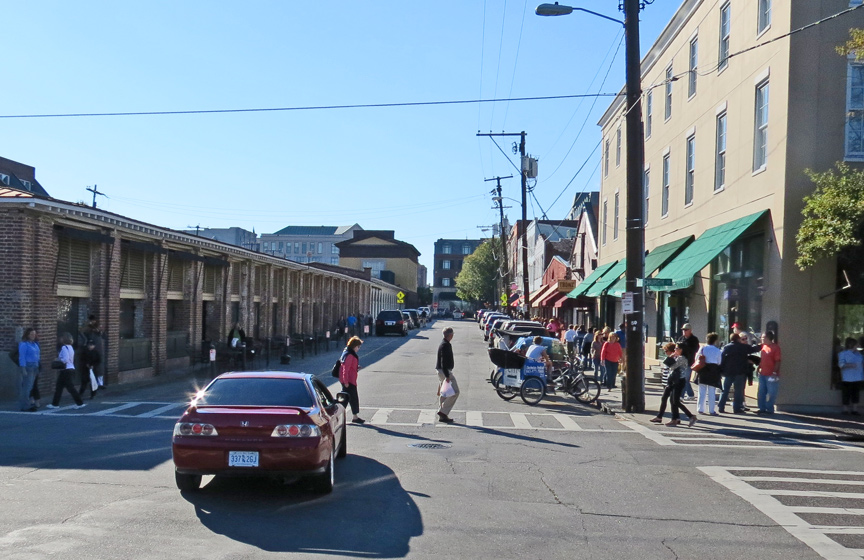
Initially known as the Centre Market, Charleston's City Market was developed as
a replacement for the city's Beef Market building (on the site of Charleston's
City Hall, 100 Broad Street), which burned in 1796. Market Hall, designed by
Charleston architect Edward B. White, was added in the early 1840s. Throughout
the 19th century, the market provided a convenient place for area farms and
plantations to sell beef and produce, and also acted as a place for locals to
gather and socialize. Today, the City Market's vendors sell souvenirs and other
items ranging from jewelry to Gullah sweetgrass baskets.
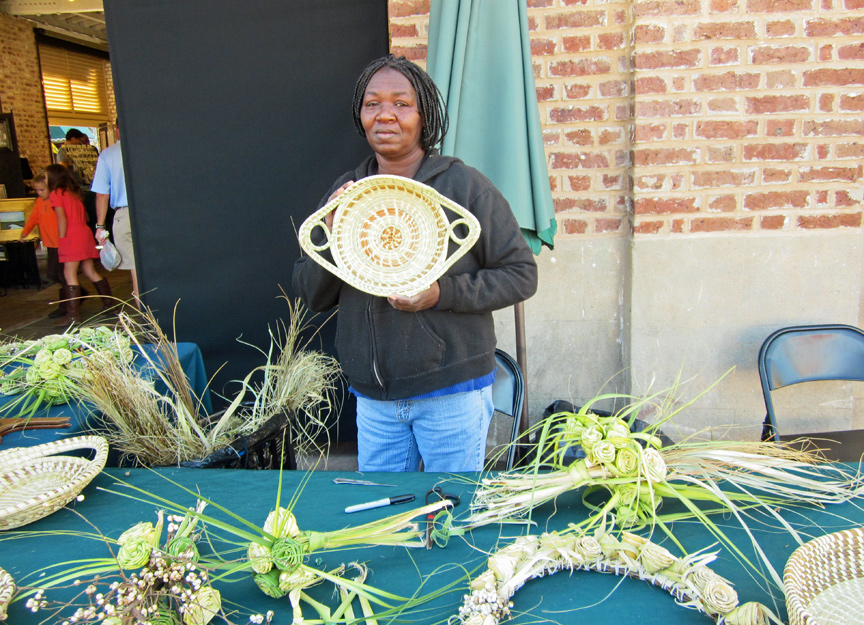
Gullah sweetgrass baskets.
Market Hall is a Greek Revival-style building consisting of one raised story resting atop a rusticated open ground-level arcade. The building's high base and frontal portico were inspired by Greek and Roman temples such as the Temple of Portunus and Temple of Athena Nike. The portico contains four Doric columns that support the entablature and pediment, and is accessed by a double flight of stairs with elaborate iron work. The upper floor is scored in an ashlar pattern. The cornice, portico, and Doric capitals are red sandstone, while the triglyphs and moldings are cement. The metopes in the entablature are decorated with alternating bucrania and rams' heads, which are symbols for a meat market. The hall's exterior brick walls are covered with brownstone stucco.
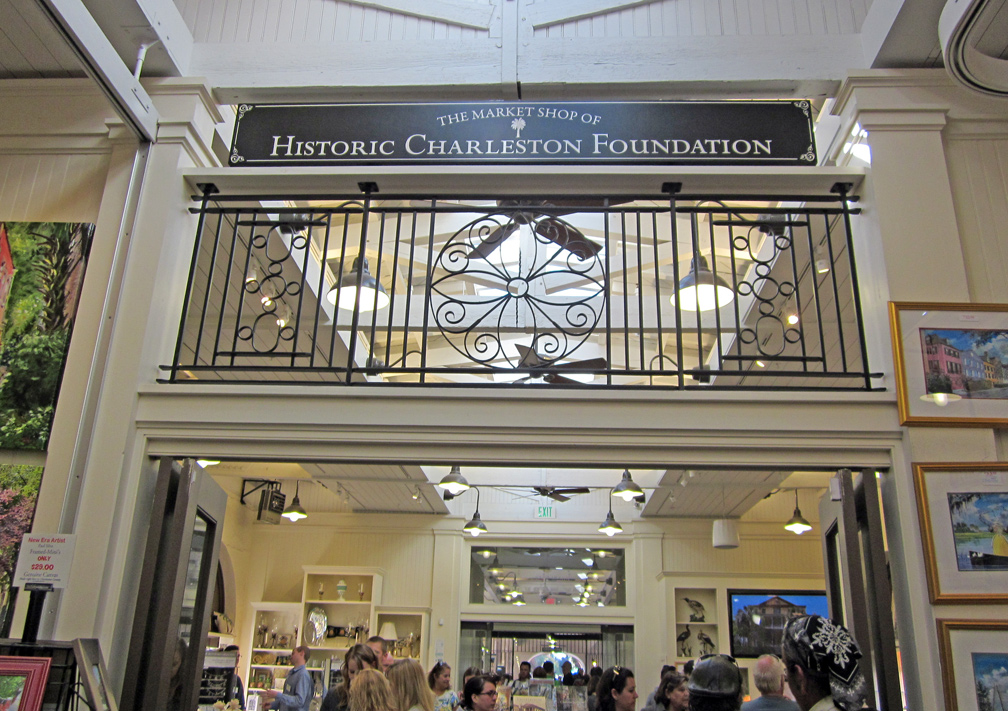
The City Market stretches for 1,240 feet (380 m) through a continuous series of
sheds oriented east-to-west, and flanked by North Market Street on the north
side and South Market Street on the south. Market stalls occupy the first story
of Market Hall, and continue through a one-story shed that stretches from the
rear of the hall to Church Street. The second shed stretches from Church to
Anson Street, the third from Anson to State Street, and the fourth from State
Street to East Bay. The sheds are simple rectangular structures with open stalls
and center walkways. Since their completion in the early 19th century, the sheds
have been renovated and rebuilt numerous times due to damage from earthquakes,
fire, and other disasters.
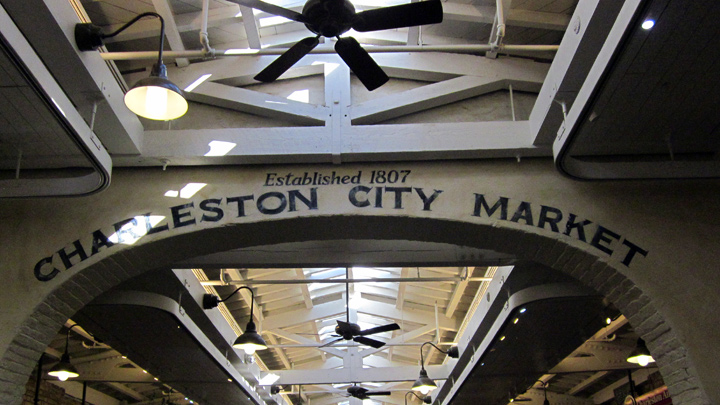
Charleston's first public market was established in 1692 at the corner of Broad
and Meeting streets, although a formal brick building wasn't built at the site
until 1739. This first "Beef Market" was replaced by a more appealing structure
in 1760, and within a short period, new markets for fish and general merchandise
were established along Vendue (Queen) and Tradd streets. In 1788, the family of
Revolutionary War general Charles Cotesworth Pinckney donated a strip of
recovered marshland for the establishment of the "Centre Market," which would
stretch from the docks of Charleston Harbor all the way to Meeting Street.

The first market sheds were erected around 1790, and gradually expanded to
occupy most of the strip from the harbor to Meeting Street by 1806. After the
Beef Market building burned in 1796, Charleston's beef market was shifted to the
Centre Market. In its early days, the market was primarily a place to sell
foodstuffs, and was subdivided into sections for beef, fish, and farm produce.
The market was also a social center, where the city's lower and middle class
residents could gather for drinking and playing games. Vultures, which kept the
market clean by eating discarded meat scraps, were a common sight at the market
into the 20th century and were protected by law.
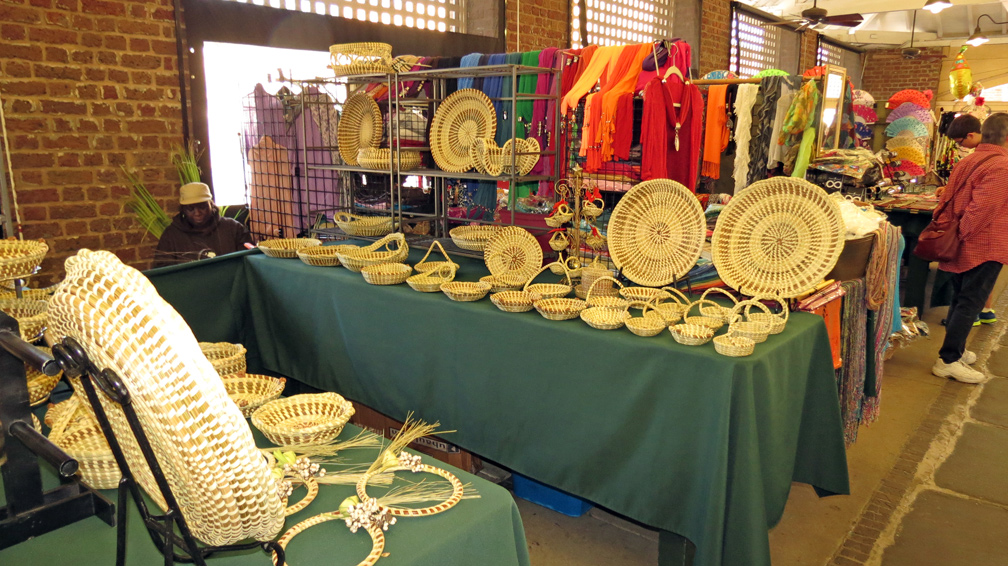
Gullah sweetgrass baskets.
In 1838, a fire destroyed the market's head-house, and the city enlisted local architect Edward B. White (1806–1882) to design the current head-house, Market Hall, which was completed in 1841. The upper room of the hall initially served as a large assembly room, and later as a military recruiting office at the outbreak of the Civil War.
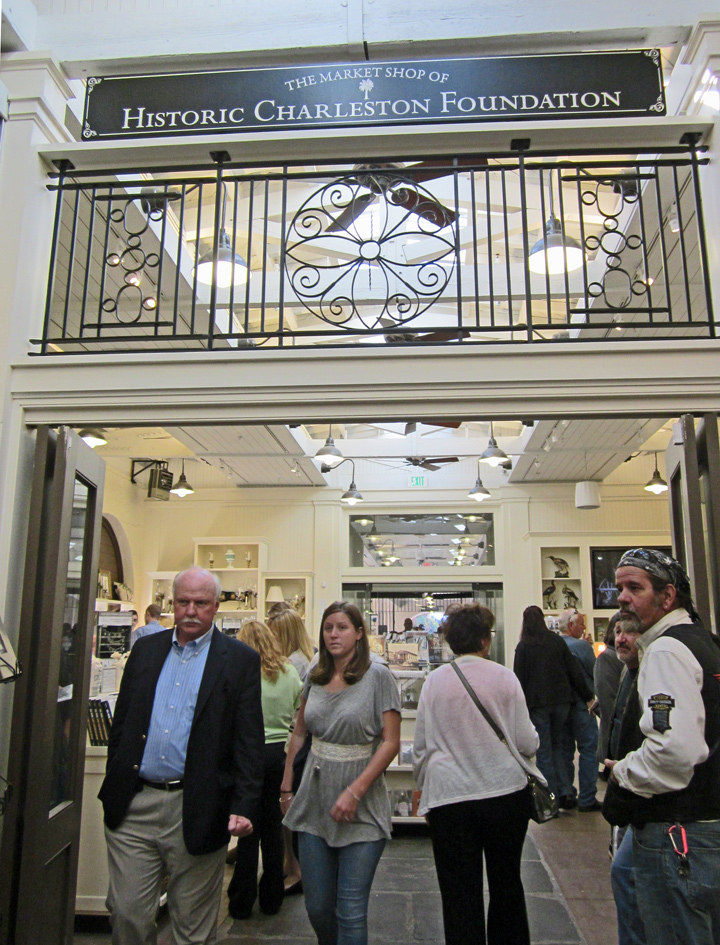
In 1899, the United Daughters of the Confederacy began using Market Hall to
house the Confederate Museum, which displayed Confederate artifacts and other
items from the city's Civil War period. The museum closed in 1989 after Market
Hall suffered substantial damage during Hurricane Hugo (including the partial
removal of its roof), and was later reopened.
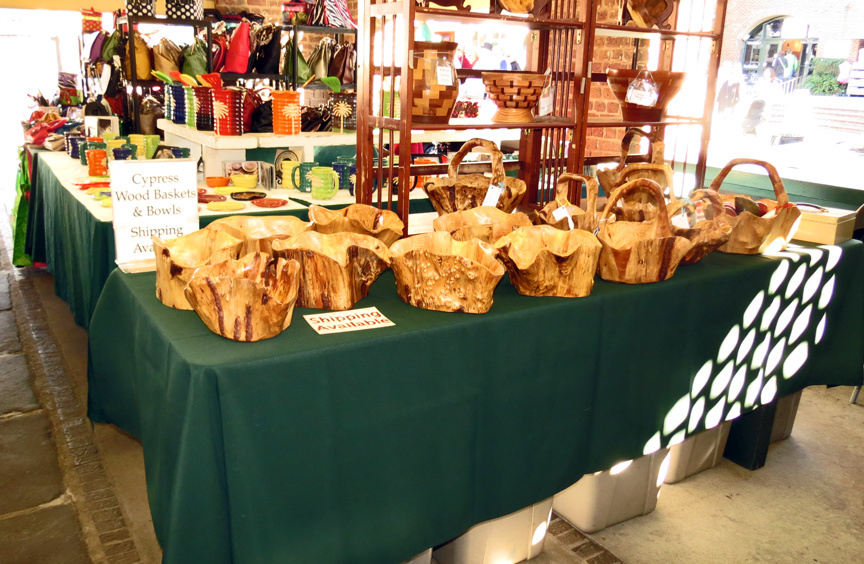
By the early days of the twentieth century, the number of food merchants using the Market had dropped dramatically. In January 1901, the Charleston City Council took up the matter, and a report was endorsed to replace the market sheds between East Bay (to the east) and Anson Street (to the west) with a small park to reinvigorate the area. While proponents of this action argued it would save taxpayer money on upkeep of the aging structures, a special committee of City Council reversed course following criticism from historical preservationists. The same matter cropped up again at a City Council meeting on November 8, 1904, when a motion was adopted calling for the demolition of the market sheds between East Bay and Anson to be replaced with grounds laid out in "an ornamental fashion." The debate about the future of the structures remained alive through mid-1905 when City Council considered letters in support of saving the buildings as unique examples of their architecture in America. Preservationists suggested preserving the buildings as a covered walkway, or converting the final building (from East Bay to State Street) into a public bath house. Business leaders, on the other hand, suggested the city demolish the Market and replace it with a freight station in a petition submitted to City Council in August 1905. Finally, on September 12, 1905, the special committee investigating the options submitted a report to City Council which called for whitewashing the walls of the eastern sheds, removing the woodwork inside, and converting the sheds into a covered walkway until another use might be developed. The work on the eastern buildings began in December 1906, and the remaining buildings were reorganized to collect meat vendors together along the northern side with fruit and vegetable vendors along the south.

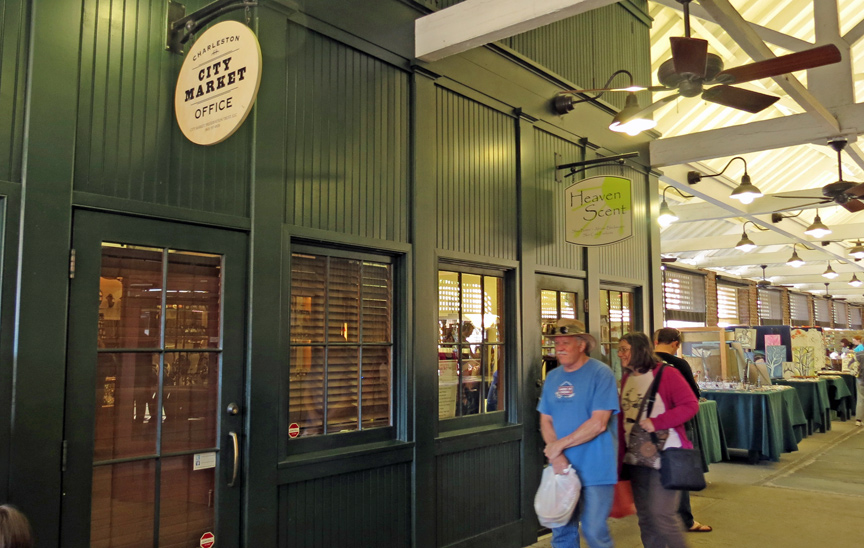
On the morning of 29 September 1938, a series of tornadoes swept through
Charleston, killing 32, injuring 100, and destroying $2 million in property. One
tornado extensively damaged the City Market.
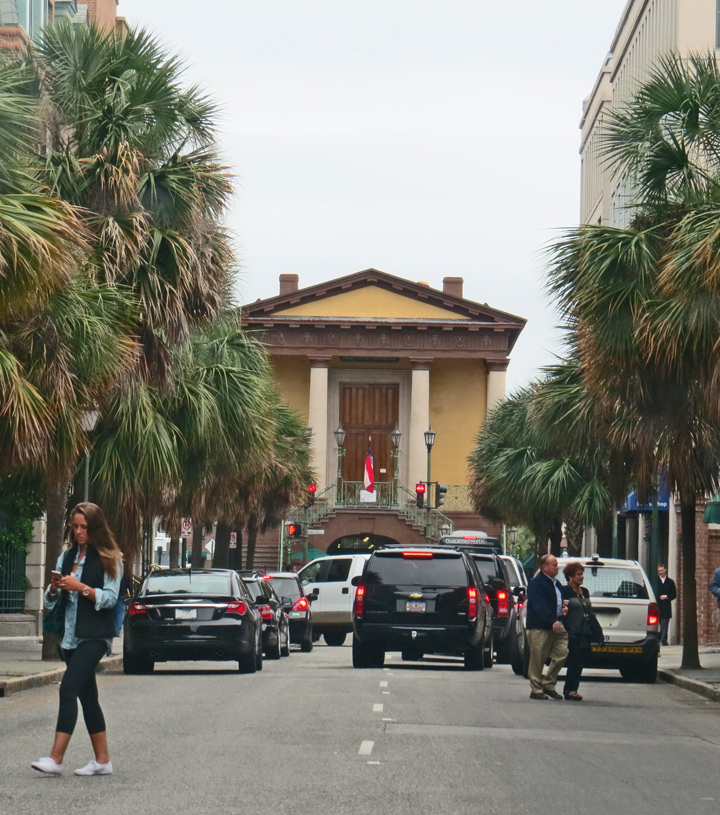
Following Hurricane Hugo in 1989, the building was restored by the City of
Charleston and received a Carolopolis Award from the Preservation Society in
January 2003. The building was repainted in its original colors, which included
strong ochre coloring and bright green ironwork, much to the displeasure of many
locals, including the mayor of Charleston. A less colorful color scheme had been
in place since 1906 when the main hall was painted "French gray and white with
the door and railings a bronze green."
Text from Wikipedia

Buy my basket !